- 1 hour ago
- Science & Environment
-
(비지니스) 태양을 향해 운동하고 있는 수성아름다운 인생/비지니스 2016. 5. 10. 00:18
출처; http://www.bbc.com/news/science-environment-36228327
Mercury's journey across Sun under way (Mercury: 수성)
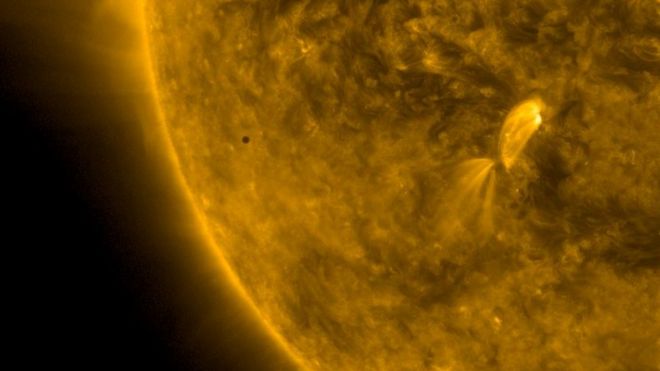 NASA
NASAMercury is seen here moving across the Sun for the first time in 10 years Skywatchers across the globe are observing Mercury transit the Sun, the little planet's third such pass of 14 it will make this century. (Skywatcher: 하늘 관찰자) (transit: 통과, 경유)
Mercury's sojourn between Earth and our star lasts from 11:12 until 18:42 GMT. (sojourn: 체류)
It will not make another transit until 2019 and then 2032.
The event is impossible - and dangerous - to view with the naked eye or binoculars, but astronomy groups worldwide are offering the chance view it through filtered telescopes. (binoculars: 쌍안경) (telescope: 망원경)
Live views from space and ground telescopes are also available online.
They show Mercury as a tiny black circle, smaller but darker than many sunspots, slowly traversing the Sun's giant yellow disc.
Where to view the transit of Mercury
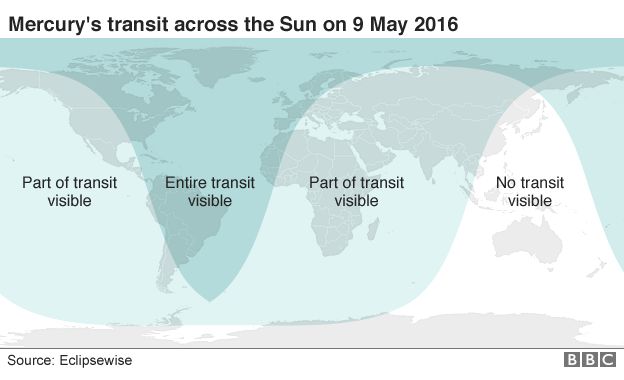
- The UK's Royal Astronomical Society has a list of public viewing events and a guide for schools
- Nasa's Solar Dynamics Observatory is making images from its satellite available in real time
- The European Space Agency is streaming live images and hosting a Google Hangout
Mercury spins around the Sun every 88 days, but its orbit is tilted relative to the Earth's. It is that discrepancy which makes it relatively rare for the three bodies to line up in space.
From western Europe, north-western Africa and much of the Americas, Mercury's seven-and-a-half-hour glide across the Sun will be visible in its entirety. A further swathe of the planet (see map below) will catch part of the transit, depending on local sunrise and sunset times.
The only land masses to miss out completely are Australasia, far eastern Asia and Antarctica.
Because Mercury is so small - just one-third as big as Earth and, from our perspective, 1/150th of the Sun's diameter - its transit can only be glimpsed under serious magnification; the "eclipse glasses" used by thousands of people to viewlast year's solar eclipse will be useless.
And to avoid permanent eye damage, any telescope must be fitted with a solar filter before being trained on the Sun. The British Astronomical Association explains on its website how amateur stargazers can enjoy the spectacle safely.
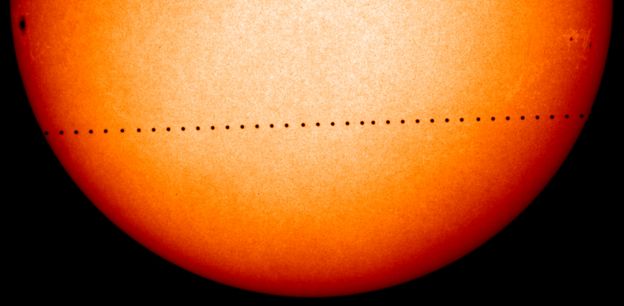 ESA/NASA/SOHO
ESA/NASA/SOHOThis composite image traces the 2006 Mercury transit, as seen by the Soho space telescope 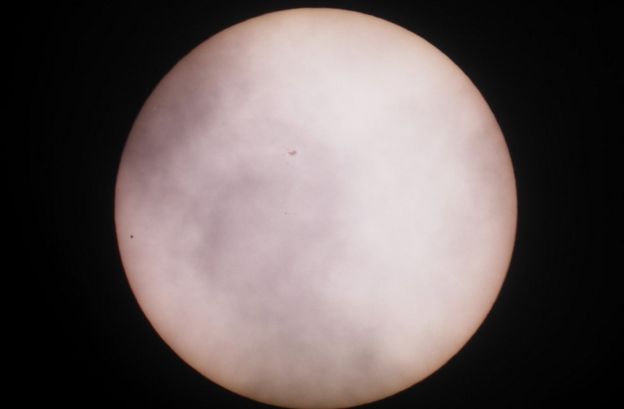 April Harper
April HarperThis photo by April Harper from Blunham, Bedfordshire, was taken after midday and sent into the BBC's Weather Watchers website Open University's Prof David Rothery said the celestial event would not present any novel scientific opportunities - but was special nonetheless.
"From this transit, we're unlikely to learn anything we don't already know," he told BBC Inside Science. "But what a wonderful event for showing people Mercury. It's a hard planet to see.
"Historically, transits were of immense importance."
In the 1700s, for example, it was observations of Mercury and Venus slipping across the Sun that allowed astronomers, led by Edmund Halley, to pin down the dimensions of the known Solar System.
Prof Rothery is a Mercury expert and a leading scientist on the European Space Agency's BepiColombo mission to the diminutive planet, which will launch in 2017 or 2018.
Mercury has already been visited by two Nasa probes: Mariner 10 flew past in 1974 and 1975 and Messenger spent four years in orbit until its planned crash landingin 2015.
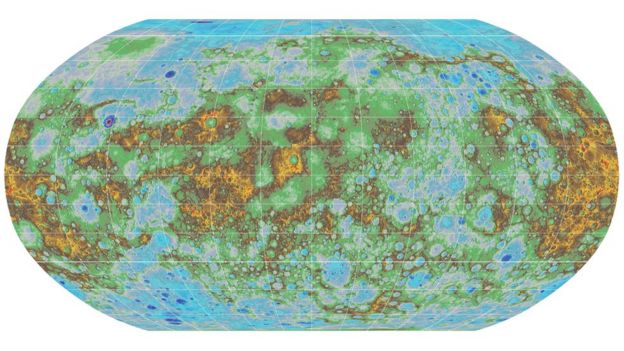 NASA / USGS / ASU / CIW / JHUAPL
NASA / USGS / ASU / CIW / JHUAPLThe team behind Nasa's Messenger mission has released the first topographic map of the smallest planet 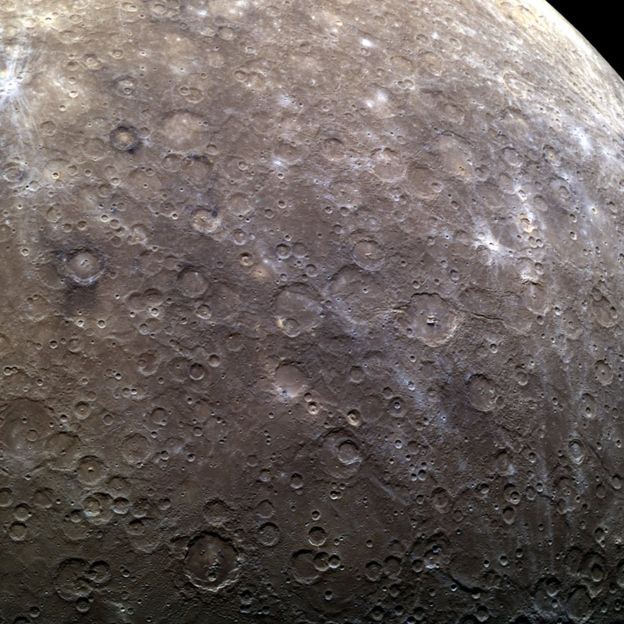 NASA/JHU APL/CIW
NASA/JHU APL/CIWMessenger spent four years in orbit taking images and measurements of Mercury "[Messenger] told us an awful lot. It really told us we don't understand Mercury - because there's a lot of things which just don't stack up," Prof Rothery said.
"It's an airless body, with lots of craters... But there's been a long history of volcanic activity, fault activity - and the composition, that began to be revealed by Messenger, is weird.
"There's very little iron at the surface but it must have a ginormous iron core, because it generates a magnetic field - which Venus, Mars and the Moon don't."
'아름다운 인생 > 비지니스' 카테고리의 다른 글
(비지니스) 중국 자국기업이 아프리카 잠비아에서 소고기 통조림에 인육 넣어 판 혐의 부인 (0) 2016.05.22 (비지니스) 美온라인운송업체 우베르社 무인자동차 기술개발에 뛰어들다 (0) 2016.05.21 (비지니스) 잭 마는 중국버전 복합언론재벌 루퍼트 머독인가? (0) 2016.05.05 (비지니스) 버리는 문화에 대항한 고쳐쓰는 비지니스 (0) 2016.05.04 (비지니스) 탈세를 제동걸고자 시행하는 것에는 무엇이 있는가? (0) 2016.04.13